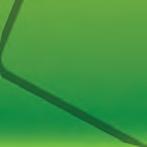Harrisonburg, Va.
Wednesday, July 24, 2024


Harrisonburg, Va.
Wednesday, July 24, 2024

By ANYA SCZERZENIE Daily News-Record
A bill sitting in Congress right now holds the key to 20 years of Lynn Cameron’s work — and could lead to thousands of acres of Shenandoah Valley forest land being preserved as soon as this year.
Cameron, 2022 Valley Treasure Award winner, and the rest of the Friends of Shenandoah Mountain organization have been working for twenty years to build support for a proposal to protect certain areas of land in the George Washington National Forest.
Lynn Cameron grew up on a farm in West Virginia, where she described the woods as her “playground.” Though Cameron is not formally trained in conservation, she has dedicated years to the project.
She worked as a librarian at JMU but is now retired and spends much of her time outdoors. However, she has been busy in her retirement. In addition to her work on the National Scenic

Area proposal, she has also served on the Virginia Wilderness committee as its past president.
“I don’t feel I’ve been retired,” Cameron said.
Because of her efforts, Cameron was awarded the “Valley Treasure” award from the Alliance for the Shenandoah Valley in 2022. She was the second person to win this award, preceded by JMU professor Charles Ziegenfus and
If you see winged, ant-like insects flying around your property, you need to know whether they are ants or subterranean termites. Your house could be in danger! Carefully compare the insects flying around your house to the illustration below. If you’re uncertain, call us for positive identification. If the insects are termites, CALL US IMMEDIATELY. We will eliminate their colony and protect your house.



followed by 2023 winner Walter Brown, who worked to preserve his family’s century-old farm. The 2024 winner will likely be announced in late July.
“I just felt very honored,” Cameron said. “I don’t work for recognition, but it was nice for an organization like the Alliance for the Shenandoah Valley to affirm the work that I’ve been doing with the Shenandoah Mountain National Scenic Area proposal.”
Unlike National Parks, National Forest land can be leased to companies for logging, fracking and other industrial uses. Cameron and the Friends of Shenandoah Mountain have proposed to designate a large area of national forest — totaling about 92,449 acres — as a scenic area. These areas would be preserved in their current state, untouched by future development. It would be known as the Shenandoah Mountain National Scenic Area.
The proposal is now included in the 2024 Farm Bill, which was delayed for several months. If it passes, the National Scenic Area could be a reality as early as this year.
“We’re getting close to fulfilling our dream of protecting the Shenandoah Mountain,” Cameron said.
A scenic area allows hiking, fishing, and other recreational activities, but not industrial development like logging or fracking. It would preserve the current roads but not allow additional construction.
There will also be four “wilderness” areas within the scenic area, which will have an even higher level of protection. Some activities allowed in scenic areas, such as mountain biking, are not allowed in wilderness areas.
Cameron said that the Shenandoah Mountain area is important not just for the environment, but for the people who live nearby and those who visit.
“It has incredibly healthy native trout streams, because they’re flowing out of the mountains with a full canopy of trees, so they’re cold, clear and clean,” Cameron said. “Everybody in the valley, all the way down to the Chesapeake Bay, benefits from the protection of this area.”
The forest on Shenandoah Mountain, Cameron said, is one of the least fragmented tracts of national forest land east of the Mississippi River. It contains over 250 bird species, a large trout population, and a species of salamander not found anywhere else in the world.
“It enhances the local economy for tourism and supports a high quality of life here in the valley, which makes it possible for businesses to attract really good employees,” Cameron said.
There will be four wilderness areas — Skidmore Fork Wilderness in Rockingham County, Ramseys Draft Addition and Little River Wilderness in Augusta County, and Lynn Hollow Wilderness in Highland County. Ramseys Draft Addition adds on to an established wilderness area, but the other three are new.
The Skidmore Fork Wilderness Area will contain Switzer Lake and High Knob Fire Tower within its 5,079-acre area. This area contains old-growth forest — a rare commodity in Virginia — and provides over half of the drinking water for the city of Harrisonburg.
Harrisonburg and Rockingham County have issued resolutions of support for the Shenandoah Mountain National Scenic Area.















In 2010, a Texas company tried to obtain fracking rights for an area in the George Washington National Forest, but local officials rejected it. However, Cameron is worried this could happen again.
“The cleanest water comes from the wilderness,” Cameron said. “Wilderness does offer the strongest protection, where you can’t do management there.”
Virginia’s two senators Mark Warner and Tim Kaine originally introduced the Shenandoah Mountain Act on July 27, 2023.



“I’m very, very grateful to Senator Tim Kaine for introducing the legislation and being our champion, and also Senator Mark Warner,” Cameron said.
By LEE ZION Daily News-Record
Cast your mind back about 440 million years ago. Rockingham County is underwater, as part of a warm inland sea similar to the Bahamas. Back then, as now, horseshoe crabs were around. No dinosaurs, though. You’d have to wait another 200 million years to see those.
“As that ocean, through tectonic activity, receded, everything that was once living in that water essentially died. It sinks to the bottom; it gets trapped in the mud. All of that gets compressed underground, and that’s the kickstarting of the limestone rock,” said Alex Collins, geologist in training at JMU and cave expert at Melrose Caverns, north of Harrisonburg.
As the inland sea dried out, the area around Harrisonburg came to have a lot of limestone, which is rich in calcium from all this extinct life. What happens next is a miracle of geography and nature. Limestone is easily weathered by water, Collins said.
“This water is slightly acidic. And this how it’s carving through and creating the dissolution of limestone,” he said.
The way the water gets acidic is it combines with carbon dioxide — the same stuff you and I breathe out every day — while also mixing with carbon dioxide from other sources. Add to that a whole bunch of other steps, and now the limestone underground dissolves, forming channels. Over millions of years, the channels get wider and wider underground, Collins said.
This forms massive caves. As water moves through the caves, this continues a drip-drip-drip that dissolves rock and creates formations that look cool. It takes




hundreds of thousands of years, but the result is rock formations with names you know — stalactites, stalagmites, cave bacon and shields.
Geographically, this region is known as karst. This city sits in the middle of a karst area, and the result are a lot of beautifully decorated caves open to the public.
There are five such caverns in the Harrisonburg area. Each of these has something unique to offer.
Endless Caverns gets its name because surveyors have yet to find where the caverns stop. The surveyed area travels about six miles underground.
A running stream runs through the cavern, which makes it an active formation. It’s also a colorful cavern, and Mike Stewart, general manager, stresses that the color is 100 percent natural, from the minerals in the rock. Endless Caverns does not use colored lights.
“Our tour is a mile long. It’s one of the longer ones. It takes about an hour and fif-

teen minutes to go through,” Stewart said.
Endless has many of the features in many caves — shields, bacon, stalactites, stalagmites and columns. There are also “pendants,” which most other caves don’t. A pendant, dangling from the ceiling, was formed while the cave was originally being hollowed out.
“Everybody comes out and says, ‘Hey, this is a cave cave,’ ” he said. “You’re up close and personal.”
Stewart noted that the time is now ripe for another cave survey, to see how far it goes. The cavern is still endless, Stewart said.
Stewart added that it’s 55 degrees in there year round.
“It’s a great way to beat the heat,” he said.
Grand Caverns
Grand Caverns is the oldest continually operating cavern in the United States. It opened in 1806.
There’s a huge amount of history there, and Grand Caverns takes advantage of it. In addition to the regular tours,
Grand Caverns holds candlelight tours over the weekend, exactly as would have happened more than 200 years ago, said Austin Shank, parks and tourism director for the town of Grottoes, which manages the caves.
Grand Caverns was already world famous by the 1860s — and that made it a tourist attraction during the Civil War. Depending on the fortunes of battle, soldiers from both the North and South visited for paid tours, Shank said.
The cave is is known for its wealth of shield formations, plus many, stalactites, stalagmites, columns, draperies and other flowstone formations.
Another thing that makes Grand Caverns different from all the others is that about 20 years ago, an entirely new section of cave was discovered — three times as large as the part that’s open to the public. This has such a narrow entrance that few people can get in, and its story has only just begun, he said.
See CAVES, Page 7






By LISA LANDRAM Daily News-Record
The Community Paramedic Program is unique to the Valley and aims to help those who may not otherwise get needed assistance.
Heather Stempien, Community Paramedic, for the Community Paramedic Program in Harrisonburg shares information about services that can help the community meet their medical needs. The program works with several other community service providers to ensure the medical needs of those in the Valley are met.
The program provides resources and connects people to community services they might not be aware of, said Stempien. For example, staff may provide a person with information about primary care doctors so they can get medication or resources for transportation to medical appointments.
The Community Paramedic Program’s
“goal is to bring healthcare out into the field and bridge the gap ... to the community,” said Stempien.
Referrals are received from community partners, clinics, the fire department, 911, Sentara or the police, to name a few, said Stempien.
“Generally, how this works is … one of our providers will refer a client to us that they think could use our help, based on something that they saw on the scene,” said Stempien.
Most of the referrals come from the fire department and the rescue squad because “we interact with them the most,” said Stempien.
The program can offer medical, social and mental health assistance, said Stempien.
This helps address mental health, substance use disorders, frequent 911 utilizers, those with disability/mobility limitation, chronic disease management and transportation limitations for medical appointments, according to Stempien’s

program documentation.
Once a referral is received, staff from the program will then meet with the person and review their situation, according to Stempien.
Participants of the program typically receive services for three months, although the length of services provided depends on the person’s needs, said Stempien.
Staff will then meet with the individual to go over goals and to develop a care plan.
Plans vary according to need, said Stempien. For example, a care plan could include information about how to manage chronic illnesses like diabetes, COPD or heart failure and/or connect them to a doctor or specialist.
The program connects others to the Community Services Board for mental health services and to Medicaid cab or Uber Health for transportation assistance, said Stempien.
“The Blue Ridge free clinic has [also] been enormously helpful to us, especially when we’re trying to get someone access to ... a primary care provider,” said Stempien.
The program can also help with obtaining medical equipment, such as wheelchairs and walkers for shortterm use.
Certification, said Stempien.
There is a certifying exam through the International Board of Specialty Certifications, at the end of the training, said Stempien.
Some of the staff in the program have quarterly meetings for the Safety Net Coalition, said Stempien. These meetings include community healthcare partners who come together and talk about concerns they may have seen in the community.
The coalition hopes to address the systemic issues seen in our community, said Stempien.
The formation of the program started in May 2023, starting with six months of preparatory research, said Stempien.
This July has had the highest number of referrals, followed by May, said Stempien.
One of the success stories that Stempien recalls is helping an older gentleman, who was experiencing frequent falls in his home.
The program helped him stay in his home safely. He received home care, medical equipment and support services for family members taking care of him.
We “haven’t heard of him falling since,” said Stempien.



After services through the Community Paramedic Program are over, Stempien said she and other staff will touch base with the person again to see if they are doing well with their community services or if they need anything further.
The staff in the program are paramedics but also complete a separate certification called the Community Paramedic
The program is unique to the Valley; however, it is gaining popularity in other regions. Although each program looks different.
Currently, there are programs in Harrisonburg, Winchester, Wintergreen and at UVA Hospital, said Stempien.
“But each program looks … unique to the next,” said Stempien. “It just depends on what the needs of the system are.”





















































By GABRIELE PAONESSA For The Daily News-Record
STANLEY — In the serene landscapes of Page County, Virginia, a unique and vibrant dream has taken root and begun to flourish. Meredith Mountain Farm, owned by Paige Meredith and her husband Greg, is more than just a flower farm; it is a testament to the power of passion, resilience, and community support.
The story of Meredith Mountain Farm begins in 2019, when Paige and Greg moved to Page County to be closer to family. Greg, who grew up in the area, met Paige in Denver, Colorado.
“He had moved out to Colorado for a job, and I had lived there for a few years. We dated for a while, got married, and decided we wanted to have a family. So, we moved back to Page County to be close to his family.” Paige recalled.
This move set the stage for their future endeavors.
The official start of Meredith Mountain Farm came in April 2023, but the seeds of this dream were sown long before.
“We had both always wanted to start a farm after moving back to Virginia.” Paige said.
With Paige being a stay-at-home mom and Greg working as a lineman for Valley Electric, they felt the need to progress and create something meaningful. The inspiration for the farm sort of just came to them.
“Greg had this job on a piece of property in the very back of the holler in the mountains. It was winter, there was snow on the ground, and the trees were bare.



He came home that night and said, ‘I went and worked on a piece of property today; it was my dream property.’” Paige shared.
Two weeks later, that very property came on the market, and they took it as a sign to start their journey. Although the closing was delayed until June 2023, Paige and Greg didn’t wait to begin. They tilled their yard on Pond Avenue and launched their farm, growing their first flowers during the intense summer heat.
The community’s response was overwhelmingly positive.
“We started our Facebook page, put it out to the community, and opened our flower stand. I started a subscription service and began selling at the local coffee shop. We were so well received,” Paige stated.
Despite the challenges, the first season was a success, fueling Paige’s passion even more.
“I learned so much and couldn’t wait

to apply it to the next season.” she added.
In addition to flowers, Meredith Mountain Farm also raises pigs.
“Eventually, we’d like to put our pork out on the market. We’re raising a breed of pig known for its marbled meat, and we’ve been building our herd since we started our farm.” Paige explained.
This diversification is part of their broader vision for the farm’s future.
A Veteran-Owned Venture
Both Paige and Greg are veterans— Paige served in the United States Navy, and Greg in the United States Army. Their military backgrounds have instilled in them a strong work ethic and a desire to give back to their community.
“We just felt like we were at this point where we wanted to keep progressing in our lives instead of feeling stagnant and getting caught up in the day-to-day of things.” Paige said.
While Paige had always dreamed of
having a farm, she discovered a new passion for cut flowers.
“Once I started looking into how everything works, it truly became my passion. I love growing flowers and giving people flowers.” she said.
The impact of locally grown flowers is significant, as about 80% of flowers in the United States are imported.
“Keeping sustainability in mind, I enjoy providing flowers that aren’t covered in pesticides and are sustainably grown.” Paige emphasized.
The farm’s flowers are picked, hydrated, and delivered to customers usually within 24 hours, ensuring freshness and quality.
Meredith Mountain Farm has fostered strong community ties.
“We sell at Massanutten Country Corner in Luray, The Coffee shop in Stanley, and we also have our farm-stand at our house on Pond Avenue, Stanley, Virginia.” Paige stated.
See FARM, Page 6


The farm-stand, open every Friday through September from 3 p.m. to dark, typically sells out quickly.
“We usually stock it with about 20 bouquets and sell out within a couple of hours.” Paige noted.
While the farm currently serves Page County, Paige and Greg are open to expanding beyond.
“If a market approached us and wanted to sell our bouquets, we’d be open to the idea.” Paige said.
However, their focus remains on their local community.
“We really enjoy giving our best products to the locals and putting our stuff out locally.” she added.
In addition to regular sales, Meredith Mountain Farm offers DIY buckets and an à la carte wedding floral menu.
“The DIY buckets are perfect for a bride who wants to make her own arrangements, and the à la carte menu is for those who value sustainably grown flowers.” Paige explained.
These options provide flexibility for event planning while supporting local agriculture.
Empowering Women and Inspiring Future Generations
As a woman-owned business, Meredith Mountain Farm holds special significance for Paige.
“It means an absolute lot. There were times in our parents’ or grandparents’ lifetimes when women couldn’t even do certain things in business, let alone own one. I have a daughter, so inspiring young girls to know they can do something like this is important to me.” Paige said.
She takes pride in running a successful business and showing her daughter that women can achieve their dreams.
Running the farm has profoundly impacted Paige and her family.
“It has given us a kind of purpose and drive to live sustainably and encourage other new farmers to do the same.” she stated.
While the work-life balance can be




challenging, the farm offers opportunities to spend meaningful time together.
“We can’t take our kids to a 9 to 5 job, but we can involve them in the farm.” Paige noted.
The farm has become a way of life, blending work and family time in a fulfilling manner.
Meredith Mountain Farm is continuously evolving.
“We’ve been doing it little by little. Last year, we only had a summer season. This year, we added a spring season and plan to add a fall season. We’d love to open our farm to the public for ‘pick your own flowers’, and farm tours.” Paige said.
Additionally, they are exploring ways to bring their pork to the market, expanding their offerings beyond flowers.
Community Support
The support from the local community has been invaluable.
“The community has truly been amazing, nothing but supportive. We’ve fostered many good relationships by being open and transparent about what we’re doing.” Paige said.
This support has been crucial in the farm’s success and growth.
Paige encourages others to pursue farming, even if it seems daunting.
“Farming is more attainable than you think. There are many resources and opportunities in our community to help you get started.” she said. “With the right support and determination, dreams can become reality, just as they have for Meredith Mountain Farm.”
Meredith Mountain Farm stands as a beacon of hope, resilience, and community spirit in Page County. As Paige and Greg continue to nurture their farm, their journey serves as an inspiration to others, proving that with passion and perseverance, dreams can indeed bloom into reality.
Contact Gabriele Paonessa at gpaonessa@pagenewspaper.com.



“We’re actively working on conducting an extensive Lidar map (Light Detection and Ranging), which is a three dimensional scan of the entire cave system, and even going so far as to link that up with GPS, so that we have a scan of Cave Hill and all the little caves that we have there,” Shank said.
Grand Caverns is working with JMU on that project, he said.
Even though people can’t see this cavern in person, that adds to the magic of the cave.
“You have this other part of the cave that’s three times larger that’s never been touched. And it’s pristine; it’s world class,” he said.
One last thing worth mentioning. Even in the heat of the summer, it’s always cool in a cave.
“With all the heat, everybody’s going to enjoy cooling off in a cave, where it’s 58 or 55 degrees,” Shank said.
Luray Caverns, about 40 minutes away from Harrisonburg in the town of Luray, is the largest cavern on the East Coast, and one of the most visited in America. The website calls it a masterpiece “4 million centuries in the making.”
Its most famous attraction is the “Stalacpipe Organ,” which is programmed to play several tunes thanks to hammers that strike the stalactites in various parts of the cave. Its other attractions are the towering columns and crystal-clear pools, said Bill Huffman, director of marketing and public relations for Luray.
The site is a registered U.S. natural landmark.
One notable formation is a drapery called Saracen’s Tent, which National Geographic called one of the most perfect drapery formations in the world. The

Smithsonian named the cavern one of the most beautifully decorated.
Then there’s Dream Lake, which is a perfect reflection of the ceiling. There are no stalgmites at the bottom of this lake — it’s just “an optical illusion,” Huffman said.
Plus a double column 47 feet high, he said.
The formations in the caverns are calcite, a crystalline form of limestone. Pure calcite is white, and Huffman was able to cite Titania’s Veil as a pristine example of a calcite formation.
Melrose Caverns reopened in 2020, after having been closed since 1968. There’s a story behind that.
Richard Yancey’s grandparents owned the property. In the 1920s, they leased the cavern for 99 years to the same company that owned Endless Caverns.
At the time, car culture was just beginning, and people began touring the countryside, including what is now U.S. Route 11, where Melrose Caverns is.
Then came the Depression, and suddenly people had no money to travel. That was followed by World War II, and now gas was rationed. So, no Sunday drives anymore.
Business bounced back in the 1950s, but not long after, Interstate 81 was built, taking business of Route 11. The cave stuck around for a while, but it closed in 1968. The lease went back to the original property owners — Yancey’s grandparents.
The buildings on the property were leased out for weddings and such. In 2010, after his parents died, Yancey decided to reopen the cave. The process, which began in took four years
During the Civil War, soldiers hid inside the caverns and etched their names inside



“So we have hundreds of etchings done by the soldiers themselves,” he said.
Of these, 90 percent were Union soldiers, he said. There are also two Native American carvings, documenting the original population of the area, Yancey said.
One part of the story is that he doesn’t see himself as competing with anyone else.
“All of the caves here, we all work together,” he said. “We see ourselves as helping each other, and we do all work together pretty well.”
Collins, the geology student, cited the shield formations in Melrose Cave as part of the natural beauty of the area. Scientists are not certain how shields form, he said.
“Every time I pass them, one, I find beauty in the structure alone. But I’m also trying to comprehend it, in my own mind,” he said.
Kathy Kelly, owner of Shenandoah Caverns, said that the caverns in the area are beautiful. One thing that makes her caverns unique is that it’s the only one in Virginia that has elevator service. So older people can get around the caverns
more easily. But that’s not all.
“We have a 1957 café — the original café in the back, where we serve lunch, have fabulous food.”
On top of that, Kelly added that many of the caverns have second attractions, and Shenandoah Caverns is no different. The cavern has “American Celebration on Parade,” a building that houses parade floats. It has all the parade floats for every presidential inaugural parade since Harry Truman in 1949. Plus Rose Bowl parades and more.
As for natural attractions, Kelly is proud of a geologic feature known as “cave bacon,” which is made of stone and looks exactly like what the name promises.
“We’ve got the best cave bacon, I think, in the entire United States,” she said. “In 1964, the National Geographic did an article on the caves,” Kelly said. And we were noticed as the most realistic bacon formation in the United States.”
One feature she found interesting is there’s one example of cave bacon hanging, and behind it there’s another one that looks like someone took a bite out of it.
Another interesting formation is the Diamond Cascade, a column embedded with crystals. Many people hold weddings in front of it, Kelly said.

































